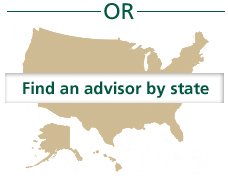Wow! A lot to discuss this quarter as the market volatility we expected has surely continued. A relative narrow range in April was followed by a new S&P500 high in May. June started weak and the market tested recent chart lows before attempting to reach new highs again later in the month. After failing to make new highs around June 23rd, the market has focused on news driven events like Greece and the failure to reach an agreement with the European Union, China’s swift market retreat, the Iran negotiations and Puerto Rico’s financial challenges among other things. We do not anticipate these events will change the trajectory of the U.S economic recovery nor have an effect on the U.S. bull market. Actually when you consider the onslaught of potential negative news all coming together at the same time, the market has held up quite well. As of this writing we are only about 3.5% off the highs and the market is showing resilience even in the face of the NYSE trading halt. Tuesday July 7th the market rallied from the lows creating the largest intraday reversal since October 2011. While it remains to be seen, intraday reversals of this magnitude often mark a short term bottom.
Let’s look at the larger two concerns. Greece has been a concern for several years now. The fact is that banks are in a far better position than they were four years ago and the private sector holds little Greek debt. The total economy of Greece is only about 2% of overall European GDP. For China, the news focuses on the recent fierce market correction but, fails to put it in the context of the tremendous rally in the Chinese markets that started about mid-March. China growth has indeed slowed however, it has gone from growing at a very steep pace to growing at a moderately fast pace.
With nearly 200 years of data for the U.S. equity markets, bear markets are always preceded by a couple of events: 1) Growth expectations really weaken and that is measured by an inversion in the yield curve. 2) Investment spending as a percentage of GDP grows to nearly 28% or more whereas now it is closer to 23%. Actually we have been seeing steepening yield curves and good economic data. Housing prices are rising year over year, both new and existing home sales have been strong, the labor market is improving and companies on average have extremely strong balance sheets. Housing prices for example increased 4.9% April to April and employers have added approximately 3.1 million workers over the past 12 months.
What about interest rates? Though the recent influence of outside events like discussed above may change the timing, the Fed has indicated that a rate hike will happen soon. First keep in mind that the Fed Funds rate has been near zero for some time. A quarter percent hike is not going to change things that much. However it is the perception that rates will continue higher as a series of rate hikes would dampen economic growth. In the last 20 years or so, there have only been three major cycles of rising interest rates. Each time, after a short and relatively shallow correction, the market rallied significantly. It is worth noting that the Fed will only raise rates if it is believed the economic activity is robust enough to handle it and the recovery will not stall.
We remain bullish over time and believe we will witness an earnings recovery as oil headwinds fade. We also expect price to earnings ratio expansion as valuations are still close to average historical levels. If you do not make emotional decisions, we believe you will be rewarded when this market malaise is resolved to the upside soon.
As always, thank you for your trust and confidence.
Royal Fund Management




